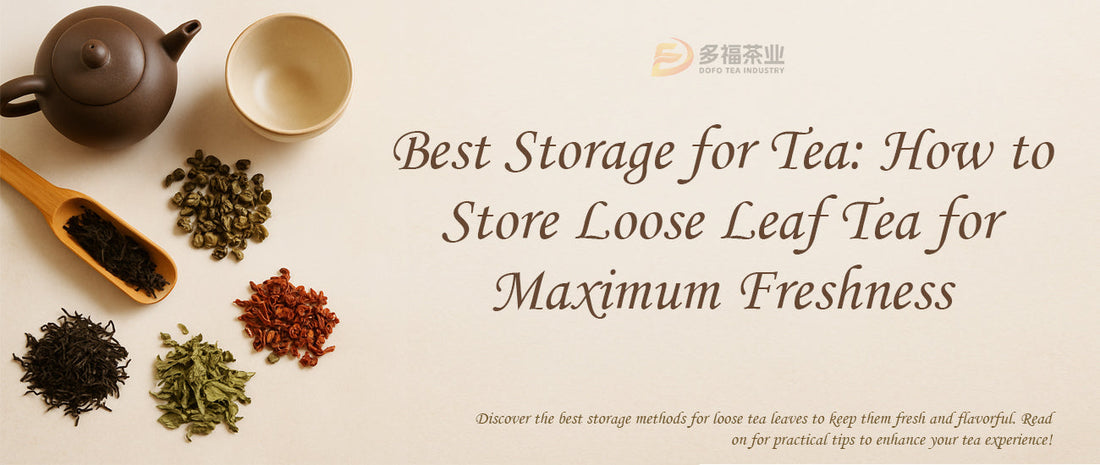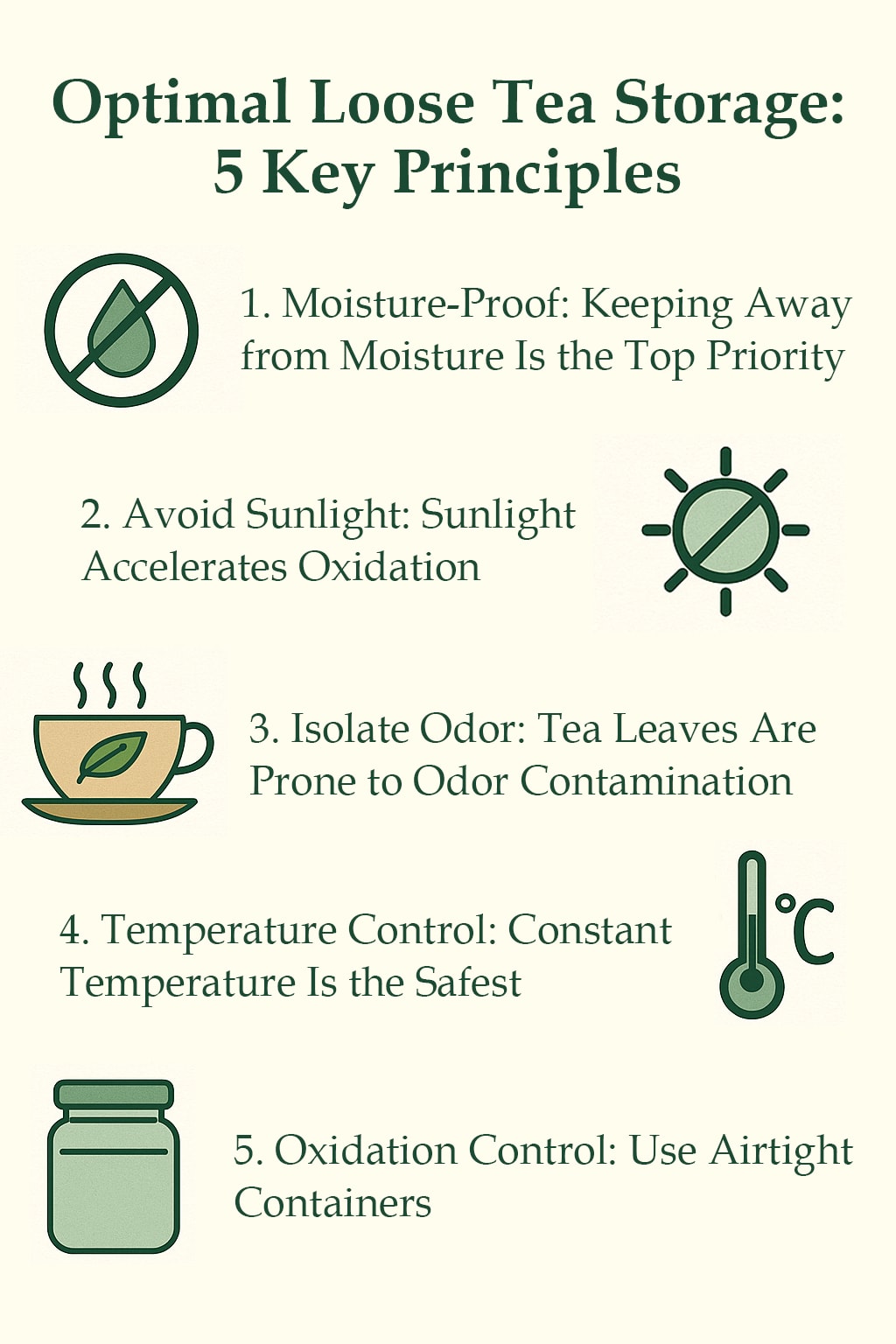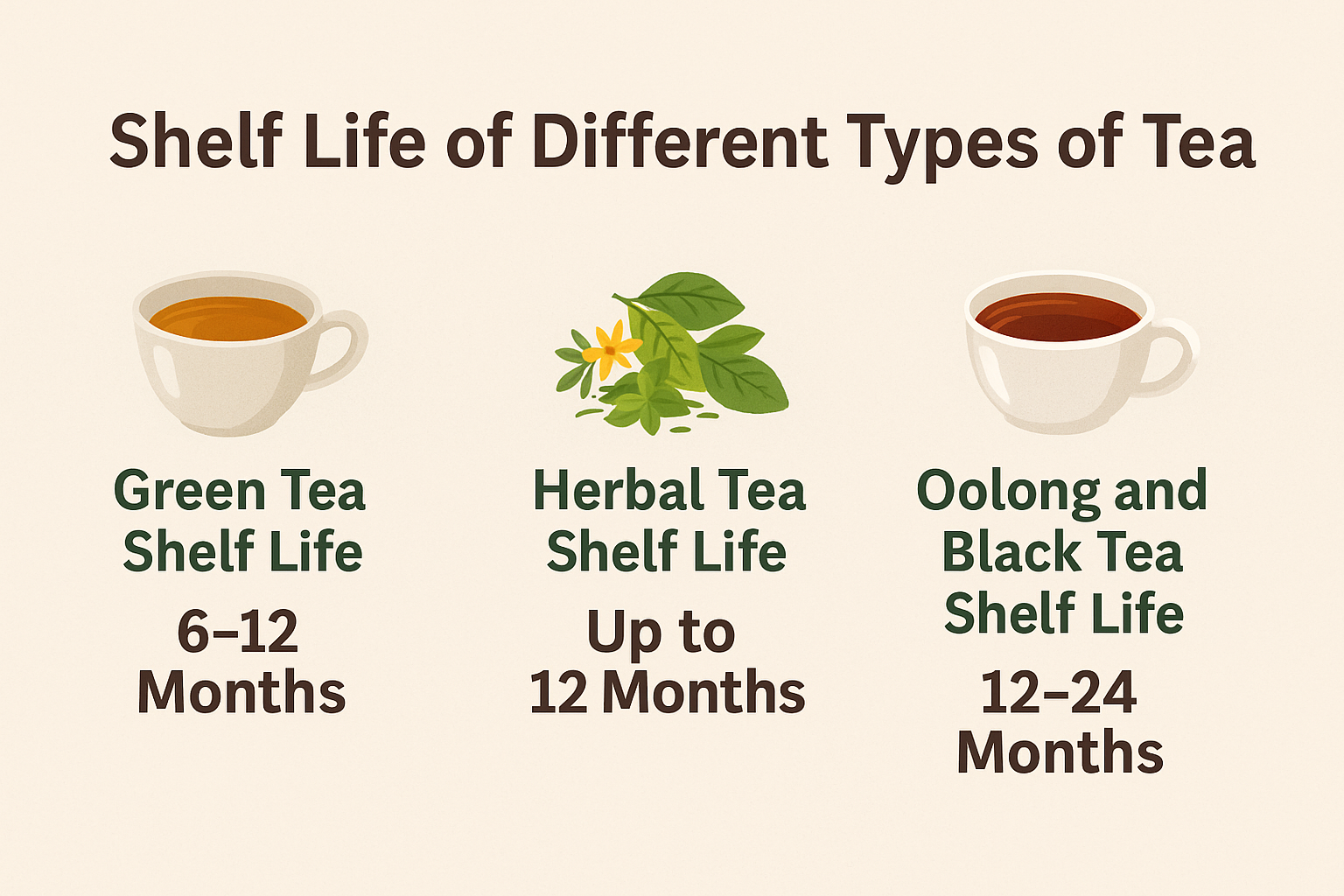
Best Storage for Tea: How to Store Loose Leaf Tea for Maximum Freshness
liujiehangShare
Keeping your loose leaf tea at peak flavor and potency requires more than simply tossing it in a cupboard. Proper storage preserves aroma, taste, and health benefits. In this guide, you’ll learn how long loose leaf tea lasts, why correct storage matters, key principles for keeping tea fresh, recommended containers, and tailored advice for different tea types.
How Long Does Loose Leaf Tea Last?
Loose leaf tea doesn’t spoil like fresh food, but it gradually loses flavor, aroma, and antioxidants. The Linus Pauling Institute at Oregon State University notes that key compounds like catechins and theaflavins break down when exposed to air, light, or heat—making proper storage essential.
With airtight, opaque containers stored in a cool, dry place, average shelf lives are:
- Green Tea & White Tea: 6–12 months
- Oolong Tea & Black Tea: 12–24 months
- Herbal Teas: up to 12 months
After these periods, tea remains safe to drink but may taste flat or stale. Label containers with purchase or opening date to track freshness.
Why Does Loose Tea Need to Be Stored Correctly?
Tea quality degrades when exposed to its “four enemies”: moisture, light, heat, and odors. Each can accelerate oxidation, leaching of essential oils, or absorption of unwanted smells. Proper storage ensures that every cup you brew captures the full, vibrant profile intended by the tea maker.
Optimal Loose Tea Storage: 5 Key Principles

1. Moisture-Proof: Keeping Away from Moisture Is the Top Priority
Tea leaves readily absorb water vapor, leading to mold or a damp, dull flavor. Always use fully sealed containers and avoid storing tea near the stove, sink, or dishwasher.
2. Avoid Sunlight: Sunlight Accelerates Oxidation
Ultraviolet rays break down tea’s natural antioxidants and essential oils. Store tea in an opaque container or in a dark cabinet away from windows.
3. Isolate Odor: Tea Leaves Are Prone to Odor Contamination
Tea leaves are porous and can absorb surrounding aromas—spices, detergents, or even coffee. Keep tea in a dedicated tea canister, away from pungent items.
4. Temperature Control: Constant Temperature Is the Safest
Fluctuating temperatures cause condensation inside containers, inviting moisture. Store tea at a steady 60–80°F (15–27°C), away from heat sources like ovens or direct sunlight.
5. Oxidation Control: Use Airtight Containers
Oxygen exposure accelerates tea’s staling. Choose containers with rubber or silicone seals to lock out air and preserve volatile compounds.
Recommended Loose Leaf Tea Containers
Choosing the right container simplifies adhering to the above principles. Ideal options include:
- Stainless Steel Tins: Opaque, airtight, durable, and non-reactive.
- Ceramic Jars with Sealed Lids: Opaque and moisture-proof, though a bit heavier.
- Dark-Colored Glass Jars (in a Dark Cabinet): If glass is preferred, store in a light-blocking space.
- Vacuum-Sealed Pouches: Excellent for long-term storage or travel; remove excess air before sealing.
Avoid clear plastic bags or containers that allow light and odors to penetrate.
Expert Advice: Personalized Storage Methods for Different Types of Tea
Not all teas are created equal; each category has unique storage needs:
Green Tea
- Shelf Life: 6–12 months
- Tips: Store in a cool place, possibly the refrigerator if vacuum-sealed. High-quality green teas lose freshness faster due to delicate oils.
Herbal Tea
- Shelf Life: Up to 12 months
- Tips: Herbal blends often include dried flowers and fruits, which can be more prone to moisture. Use desiccant packs in the container to absorb any humidity.
Oolong and Black Tea
- Shelf Life: 12–24 months
- Tips: These oxidized teas are more stable. Store in a pantry or dedicated tea cabinet at room temperature. Avoid extreme temperatures and strong odors.

FAQ – Frequently Asked Questions
Q1: Can I put loose tea leaves in the refrigerator?
Refrigeration can expose tea to moisture and odors from other foods. Only refrigerate if tea is in a vacuum-sealed, odor-proof container.
Q2: How to know if loose leaf tea is bad?
Signs of stale or spoiled tea include a flat or musty aroma, lack of flavor, or visible mold. Discard any tea that smells off or shows discoloration.
Q3: What are the best containers for storing loose leaf tea?
Use airtight, opaque containers such as stainless steel tins, ceramic jars, or dark glass canisters stored in a dark cabinet.
Q4: Can loose tea be stored for several years?
While some aged teas like pu-erh improve with time, most teas are best consumed within the recommended shelf life for peak flavor and benefits.
Bonus Tip: Label and Manage Your Tea
Keep your tea collection organized by labeling each container with the tea type and opening date. Rotate your teas so older ones get used first, ensuring no tea sits past its prime.
Create the Perfect Tea Storage Space
With these storage strategies, your loose leaf tea will stay fresh, aromatic, and flavorful—cup after cup. Invest in quality containers, control environmental factors, and tailor storage to each tea type to enjoy the full benefits of every leaf.
If you are looking for high-quality, certified organic loose tea leaves, you may want to visit the Dofo Tea official website . Every leaf of tea is carefully selected and made for taste.





